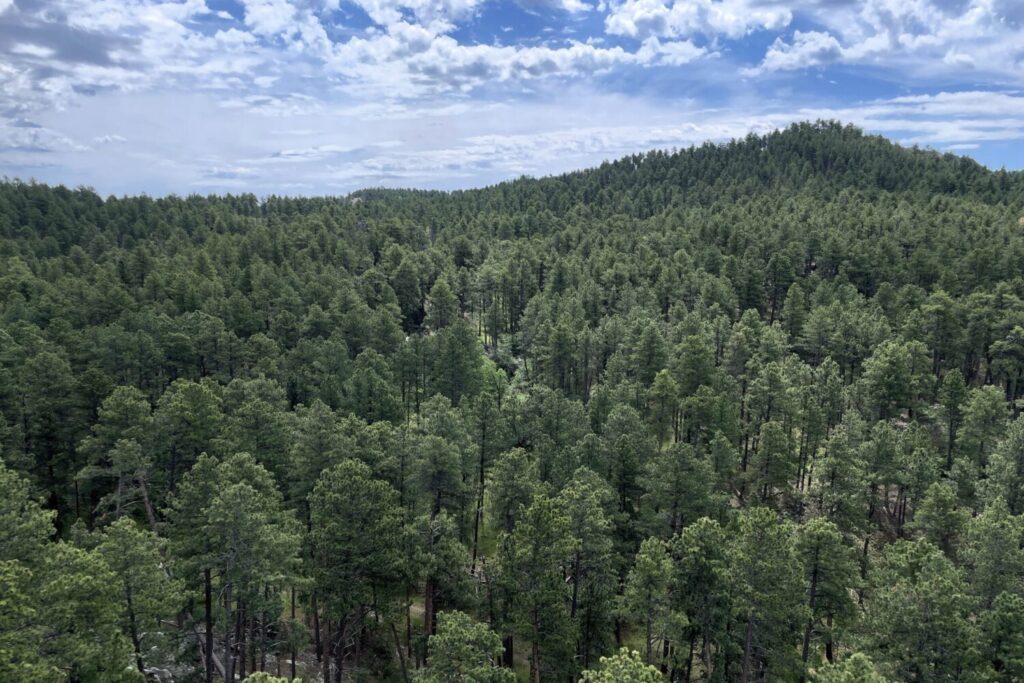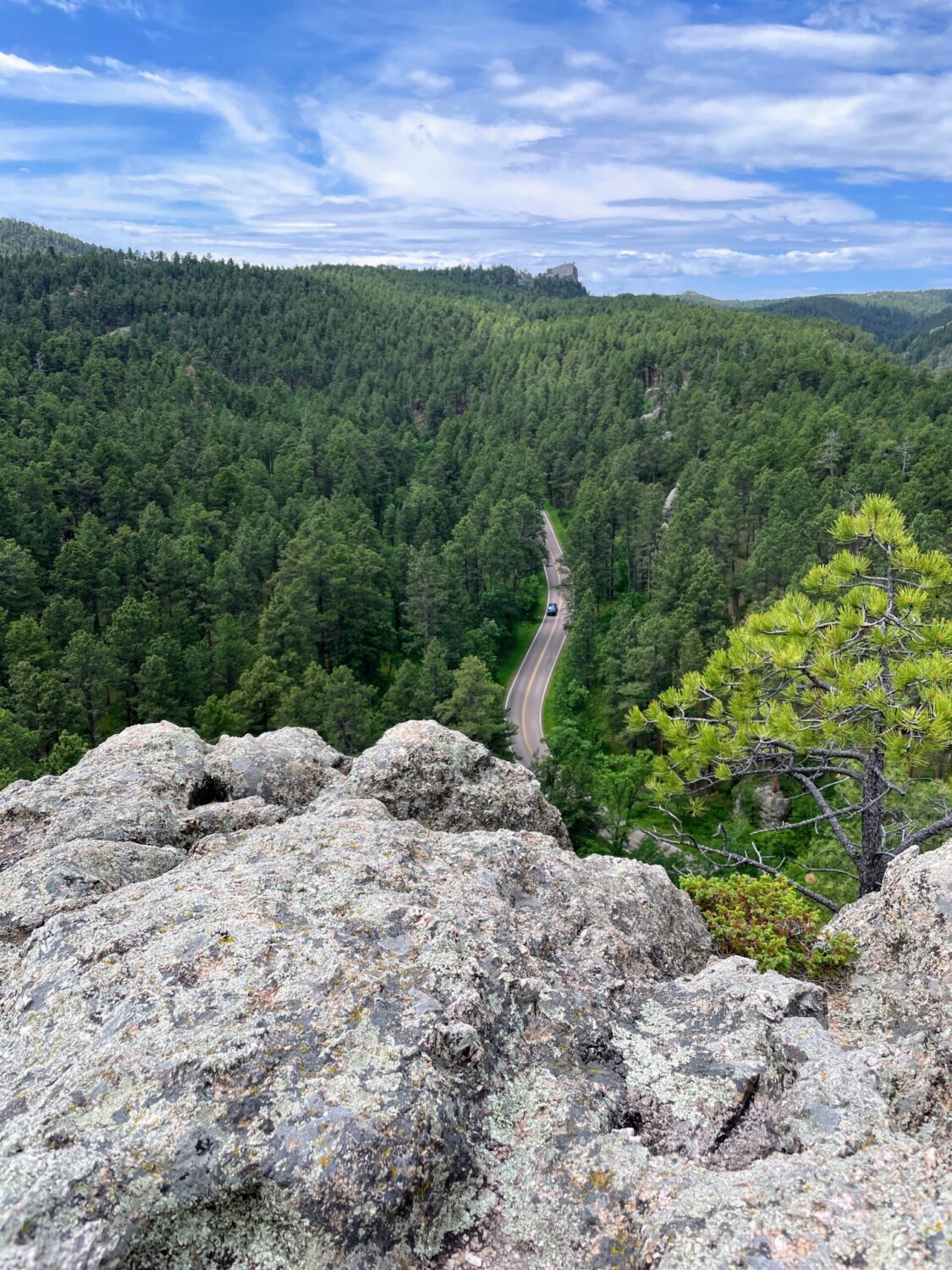
A June 2025 view of the area in South Dakota’s Black Hills proposed as a site for the National Garden of American Heroes sculpture park. (Seth Tupper/South Dakota Searchlight)
It’s not surprising that a guy with a gold-gilded New York City apartment would want to decorate a forest with 250 statues.
What might surprise South Dakotans is how close President Donald Trump’s National Garden of American Heroes is to becoming a Black Hills reality.
Tucked among the hundreds of pages in the One Big Beautiful Bill Act that Congress passed and Trump signed, there’s a provision appropriating $40 million for statue procurement.
The bill doesn’t designate a location, but multiple signs point to the Black Hills as a contender. Trump was in the Black Hills, after all, when he announced the idea five years ago during a speech at Mount Rushmore National Memorial. Earlier this year, South Dakota Gov. Larry Rhoden offered Trump a site about a mile east of the mountain carving, where members of a prominent Rapid City family are willing to donate undeveloped land bordering the Black Hills National Forest.
South Dakota governor asks Trump to build promised statue garden and put it near Mount Rushmore
If the Black Hills location is chosen, a peaceful pocket of nature will be obliterated to make way for a new road, a parking lot and statues of Kobe Bryant, Julia Child, Whitney Houston, Vince Lombardi and Alex Trebek.
Those debatably statue-worthy names from sports and entertainment are all on the list Trump released in 2021, along with a bunch of names most people have probably never heard of, plus dozens of historical figures such as Paul Revere, Harriet Tubman and Martin Luther King Jr.
The project has supporters, but many people who love the natural beauty of the “island in the plains” are likely to oppose the man-made intrusion. It wouldn’t be the first time a politician wrongly anticipated broad public support for a Big, Beautiful Black Hills Idea.
Nearly 10 years ago, then-Gov. Dennis Daugaard was convinced that Spearfish Canyon should have a state park. But where he saw a canyon in need of state management for throngs of visitors like those at Mount Rushmore and Custer State Park, many locals saw a natural treasure in need of protection from exactly that kind of development and increased visitation.
Daugaard eventually gave up in the face of opposition, but that didn’t stop people from flocking to Spearfish Canyon, much of which lies within the federally managed Black Hills National Forest. Modern methods of information sharing have turned some of the canyon’s locally known secret spots into congested tourist destinations.
Some Black Hills residents have conflicted feelings about that. They know tourism is vital to their economy. They also know that if the Black Hills is overpromoted and overdeveloped in pursuit of tourist dollars, it’ll wreck some of the natural beauty that inspires tourists to visit in the first place. There has to be a balance.

Few people understood that better than the late Peter Norbeck, a legendary South Dakota governor and U.S. senator. During the late 1920s and early 1930s, he hiked and rode horseback over Iron Mountain more than 20 times while surveying a route for Iron Mountain Road. The winding ribbon of asphalt that resulted from those efforts intentionally forces drivers to slow down and appreciate the surrounding forest and mountains.
In some ways, the road intrudes on those surroundings, not only with pavement but also with tunnels that frame Mount Rushmore. Those intrusions were carefully planned to complement nature and the mountain carving. The rest of the route twists and turns around the scenery to preserve as much of it as possible.
Norbeck fought for his circuitous route against engineers who favored cheaper, easier and more destructive ways to cut a road through the area.
“He insisted,” wrote Norbeck’s biographer, Gilbert Fite, “that none of the natural beauty be destroyed.”
The proposed Black Hills site of the National Garden of American Heroes is a stone’s throw from Norbeck’s meticulously designed road. It’s unlikely he would have supported a spontaneous, ill-considered installation of 250 statues that would drastically change the character of the route.
And it’s apparent that Norbeck — who devoted much of his life and career to conservation — knew a little more about what’s best for the Black Hills than a guy who’s spent a lifetime putting his name on tall buildings.
Don’t miss new commentary: Sign up for our free newsletter.


